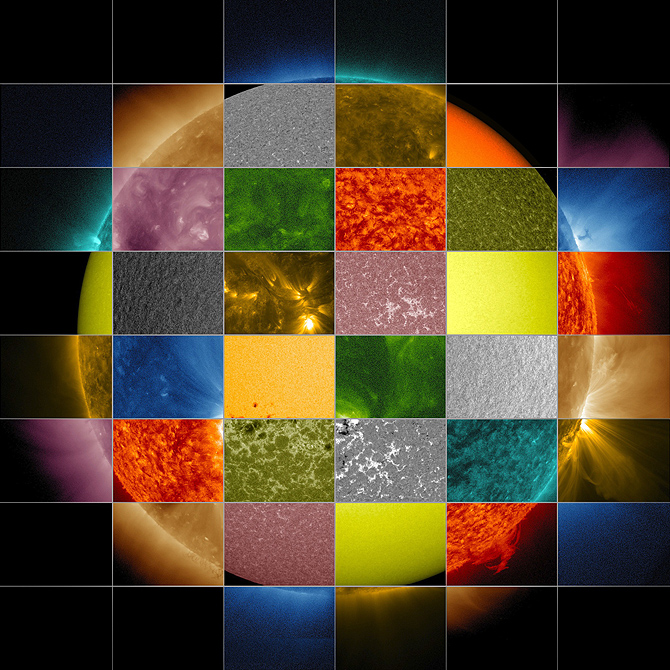Sunny NASA Collage
Science shows its beauty: a collage of “good and light” appeared on the NASA website - 48 photographs of the Sun, taken with the help of spectral cameras in SDO and SOHO spacecraft. Frames are different temperature layers. The pictures were taken in different color spectra to analyze the structure of the star.

In full size.
For observation, solar telescopes use wavelength information in two ways:
over the entire spectrum of radiation - allows you to submit a general temperature picture;
a certain frequency of radiation - allows you to monitor a certain layer of the atmosphere.
For example, SDO observations include the following solar structures (wavelengths in angstroms):

')
More in the most news .

In full size.
For observation, solar telescopes use wavelength information in two ways:
over the entire spectrum of radiation - allows you to submit a general temperature picture;
a certain frequency of radiation - allows you to monitor a certain layer of the atmosphere.
For example, SDO observations include the following solar structures (wavelengths in angstroms):
- 4500: photosphere - the visible surface of the sun.
- 1700: The chromosphere is the more burning atmospheric layer located above the photosphere.
- 1600: transition region between the chromosphere and the corona.
- 304: light emitted from the chromosphere and transition zone.
- 171: calm crown areas.
- 193: crown active regions
- 211: high-temperature corona areas with enhanced magnetic activity.
- 335: also high-temperature corona zones with increased magnetic activity.
- 94: corona areas at the time of solar flares.
- 131: The hottest substances at the time of the solar flare.

')
More in the most news .
Source: https://habr.com/ru/post/167863/
All Articles